Bold and futuristic: new book explores the work of creative polymath Marc Newson
A weighty new tome celebrates the genius of creative polymath Marc Newson, chronicling evolution, experimentation and innovation in a career spanning four decades
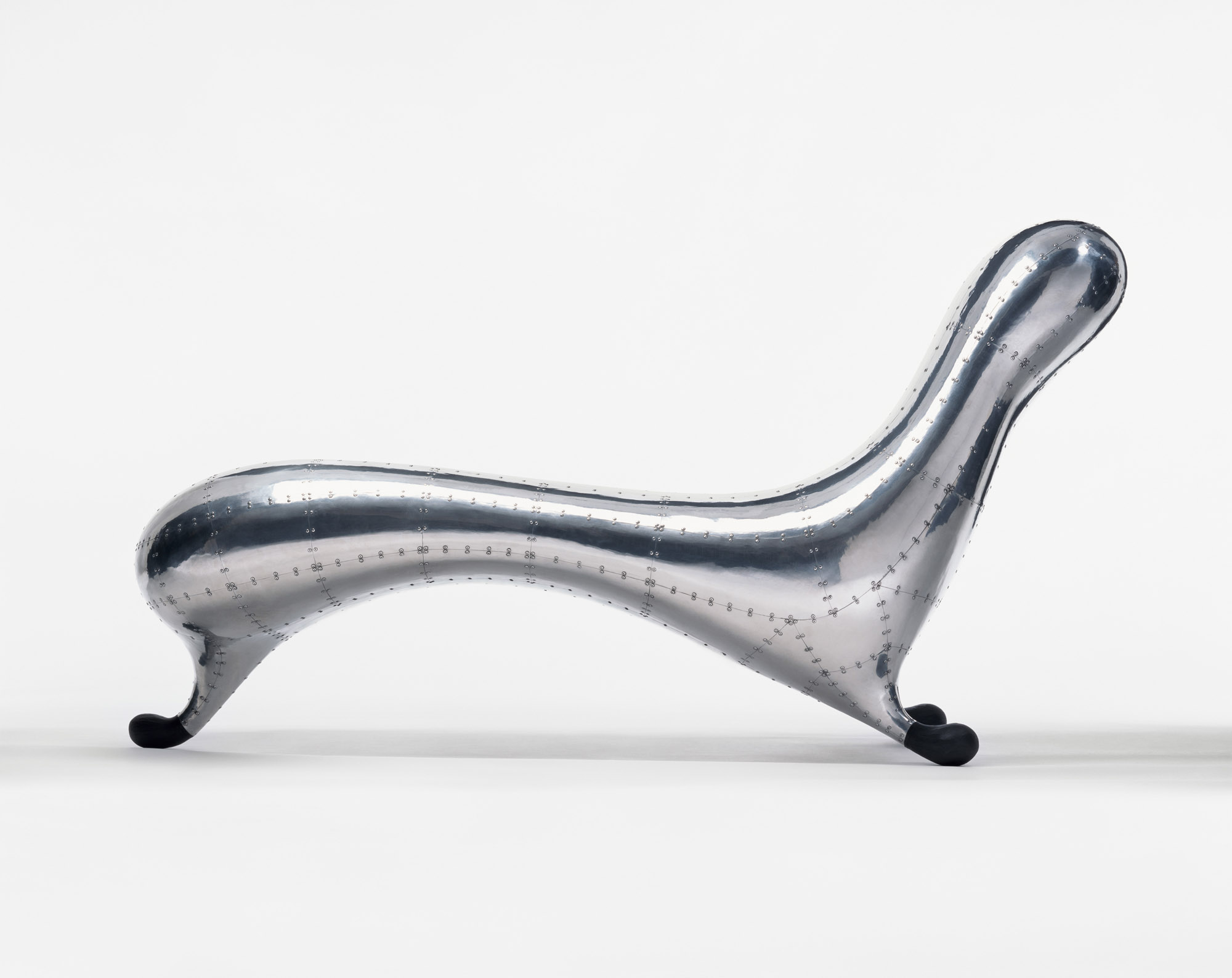
Marc Newson is that rare beast, a rock star of a designer who has infused a diverse catalogue of objects with a unique sense of personality, using an approach that is both instantly identifiable yet often unexpected. You know it’s a Newson, somehow. Ever since his earliest furniture projects, the lively, neo-pop aluminium furniture that spliced postmodern playfulness with 1990s bling and the nascent digital sampling culture, his work has taken flight, often in very literal ways. Thrillingly, 40 years of his process, experimentation and innovation is presented in a handsome new XXL volume, Marc Newson: 84-24, written by Alison Castle and published by Taschen.
Marc Newson: 84-24 published by Taschen
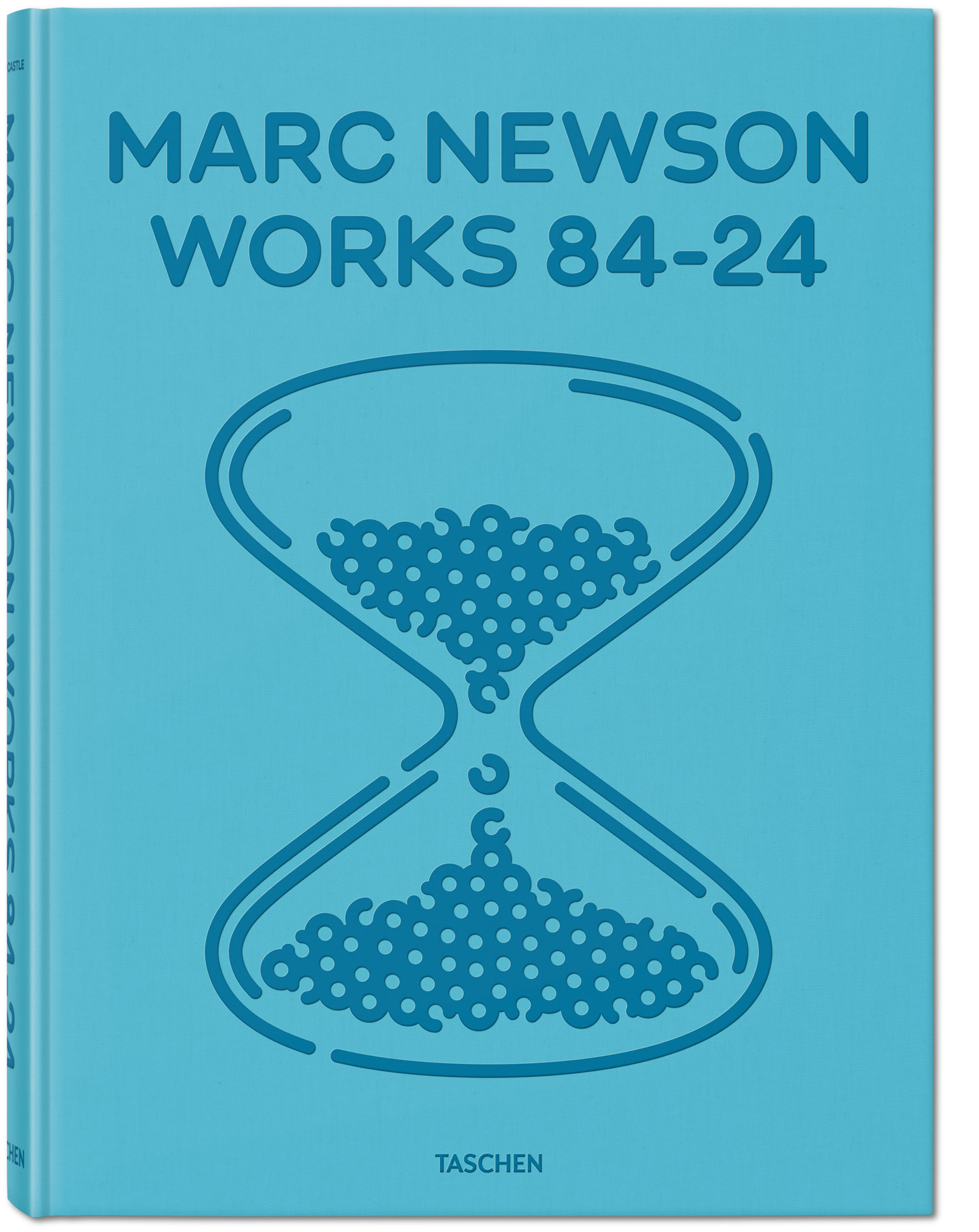
As Castle notes, Newson is largely self-taught, parlaying early learning experiences in the jewellery workshop at Sydney College of the Arts into ever larger pieces as he continues to seek out new ways of making the forms he conjures up in his head. In the beginning, this led to a strange hybridisation of method and intent, with industrial-looking pieces, like the aluminium ‘LC1’ lounger from 1984, belying their labour-intensive, highly crafted construction.
The extent of this labour put early Newson pieces squarely in the realm of design art, a newly emerged category that raised the stakes – and the budgets – of the modern furniture scene. The ‘Lockheed Lounge’ chair (1988) was the apotheosis of this phase, with its sibling, the ‘Embryo’ chair (1988), representing the moment his aesthetic was transferred into a more production-friendly and reproduceable form.
As Newson’s status grew, collaborations with furniture makers enabled his designs to become more widely available. Cappellini, Moroso and B&B Italia have all produced his distinctive designs, often existing alongside Marc Newson Editions that have a more bespoke and crafted finish. The book also charts the creation of Ikepod, the watch brand developed with Oliver Ike. Newson oversaw six influential watch models between 1996-2008, before taking this knowledge to Apple, at the invitation of his friend and frequent collaborator Jony Ive, to work on the Apple Watch. Since 2019, he has been in partnership with Ive in the creative agency LoveFrom.
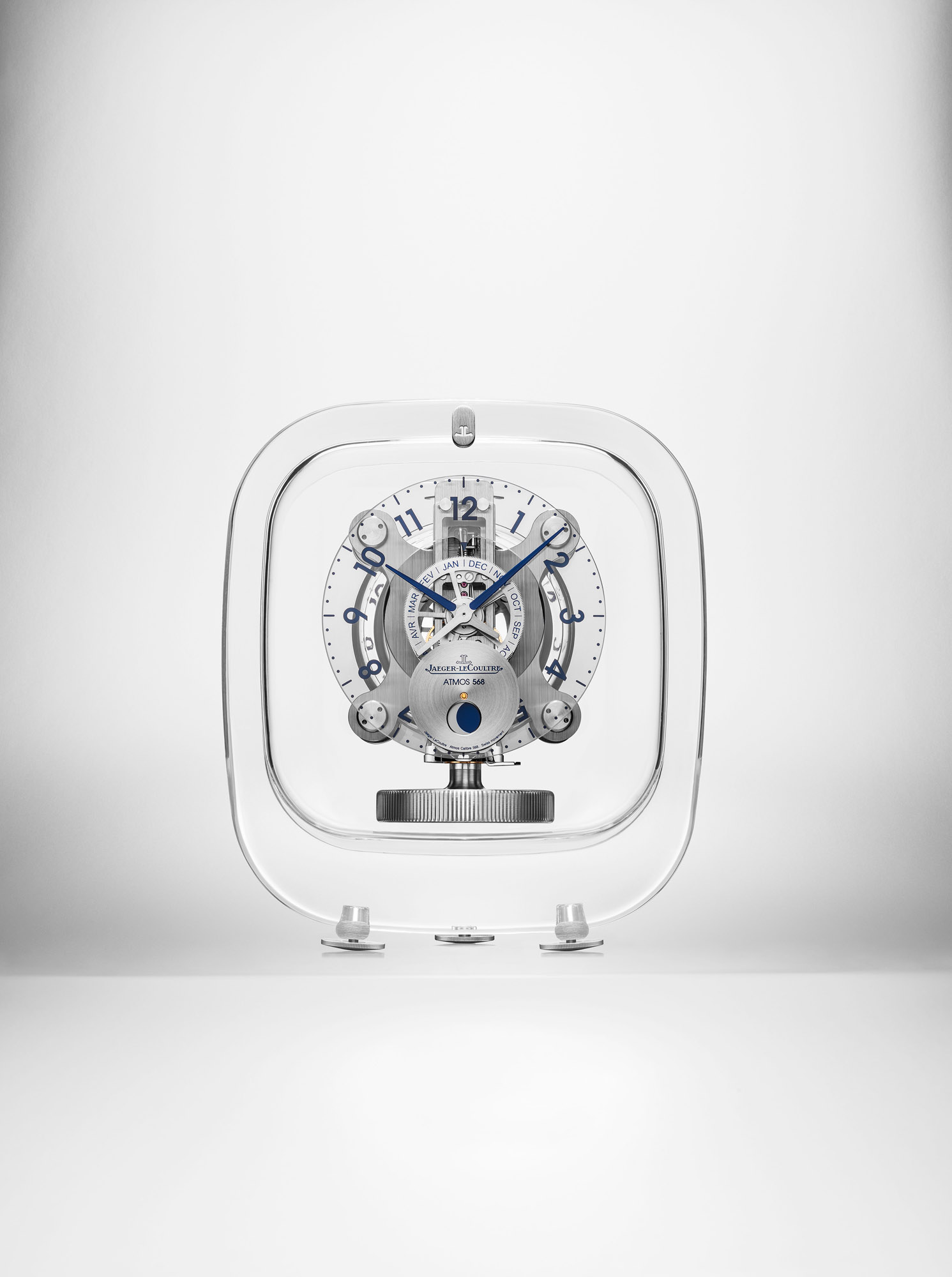
The crystal-clear base of Newson’s ‘Atmos 568’ clock, designed for Jaeger-LeCoultre, makes the movement appear as if it were magically hovering inside the case
Newson’s interests in technology and transportation are also made abundantly clear, as he got the opportunity to work closely with the manufacturers he admired the most, designing everything from cameras and surfboards to airlines and bicycles. Along the way there have been several notable collaborations with publishers Taschen, like the mighty Lunar Rock edition of Norman Mailer’s MoonFire: The Epic Journey of Apollo 11, inspired by the design of the Eagle lunar module.
Inevitably, Newson’s mastery of multiple disciplines has resulted in the ultimate in ostentatious commissions, the superyacht, with two examples – one finished, one nearing completion – featured in 84-24. The book provides a rare insight into Solaris and Nausicaä, built by Lloyd Werft and Lürssen respectively. Such projects satisfy the designer’s appreciation of craftsmanship and technology in a way unlike any other. ‘It’s architecture built by watchmakers. It really is that level,’ says Newson.
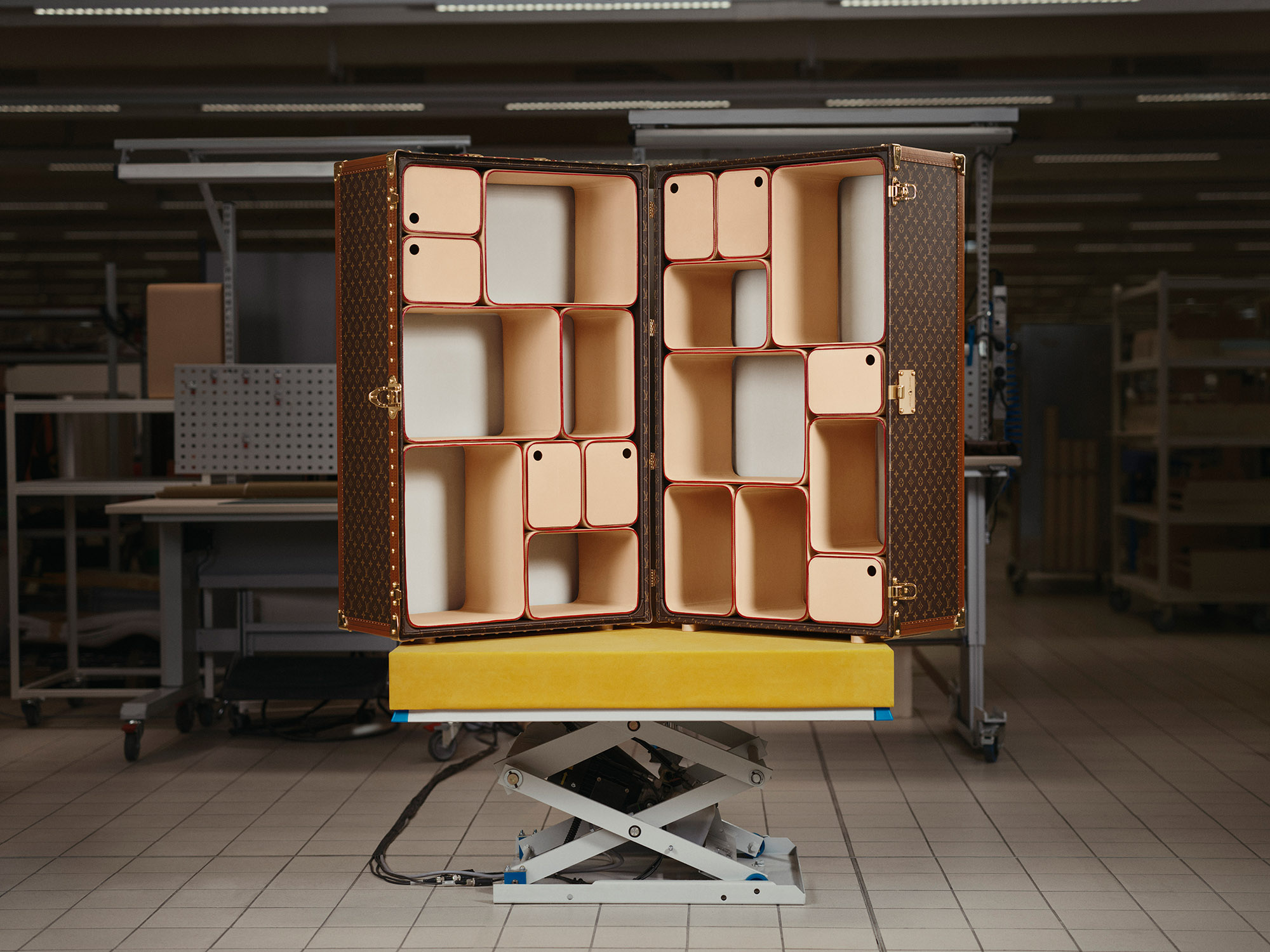
The ‘Cabinet of Curiosities’, Newson’s reimagining of Louis Vuitton’s travel trunk featured cube-like partitions, upholstered in leather and suede
84-24 covers four decades of evolution, chronicling an oeuvre that demonstrates a love for all things mechanical and futuristic coupled with an appreciation for softer forms and materials, often struck through with bold pops of colour. From the 1990s onwards, the consistency and quality that Newson has brought to every project has given everything a timeless feel, not mired in passing aesthetic fads or materials trends. This is evident throughout the book.
Wallpaper* Newsletter
Receive our daily digest of inspiration, escapism and design stories from around the world direct to your inbox.
Although only the first few projects are presented chronologically, the rest are arranged by genre. However, the visual index at the back of the book sets out the Newson portfolio in date order. Despite working across a number of fast-moving technological sectors, using new materials and processes as they become available, you would be hard-pressed to categorise any of them as being representative of a particular decade.
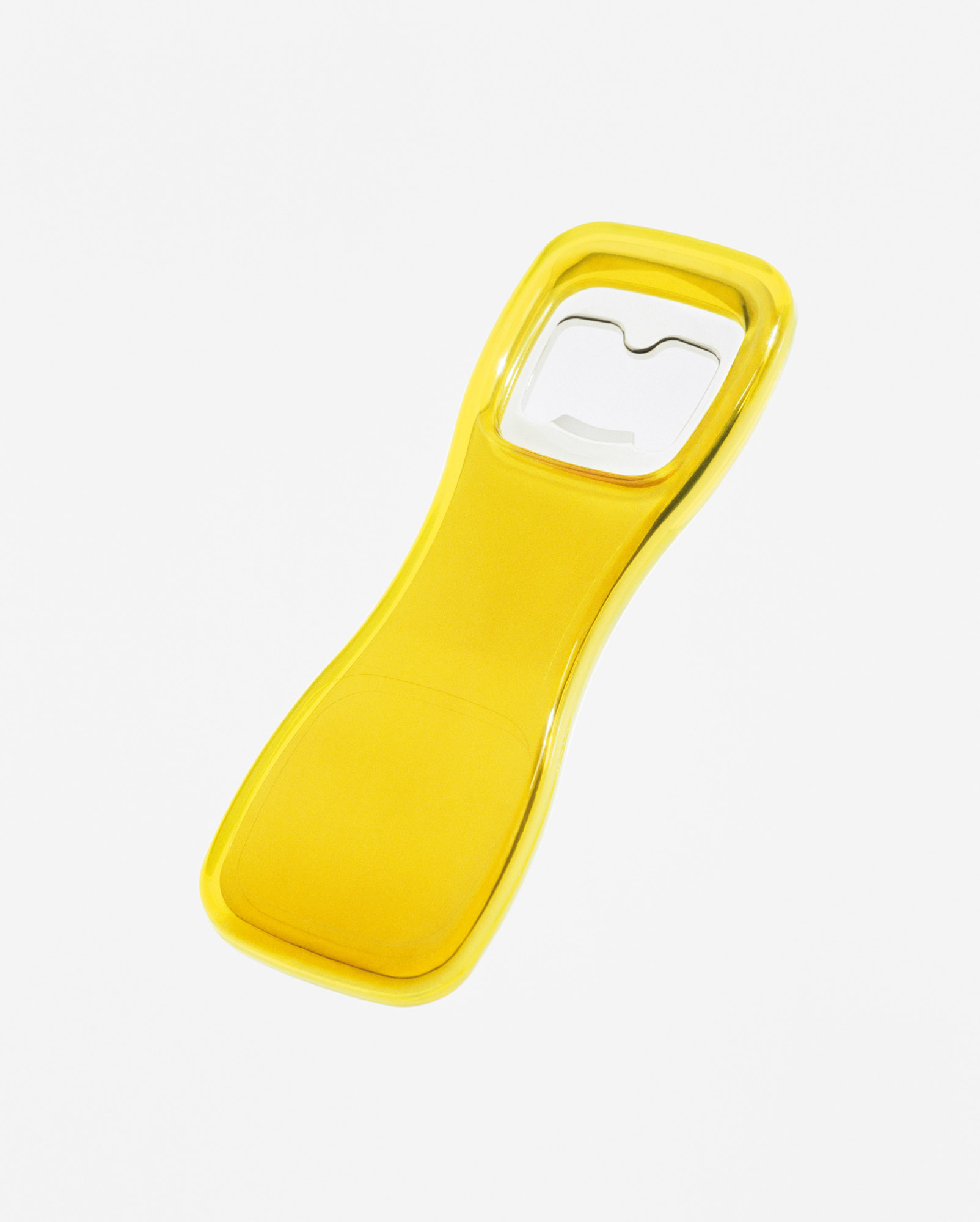
The brightly coloured ‘Stavros’ bottle opener was designed for Alessi in the 1990s using a computer, a first for Newson
The term ‘retro-futuristic’ is often abused, thrown about as shorthand for design that embodies a nostalgic, almost conservative, vision of tomorrow. Many of Newson’s most notable projects have been strictly conceptual, such as the Kelvin 40 aircraft (2004) and Ford 021C concept car (1999). Each is timeless in form and entirely credible, although on a purely practical level they could never have been made to work as mass-produced objects at the time. In lesser hands, such a brief would result in something cartoonish and instantly dateable, yet both still appear box-fresh and believable.
Taschen’s mighty format does justice to Newson’s tireless attention to detail, and Castle’s bold claim that Newson ‘needs no introduction’ is most probably correct. For collectors of design and chroniclers of culture, 84-24 is an essential catalogue raisonné of one of the most extraordinary careers in the history of design.
‘Marc Newson Works 84-24’, £150; ‘Marc Newson Works 84-24: Art Edition’ (edition of 100, in leather box with signed print), price on request, both published by Taschen
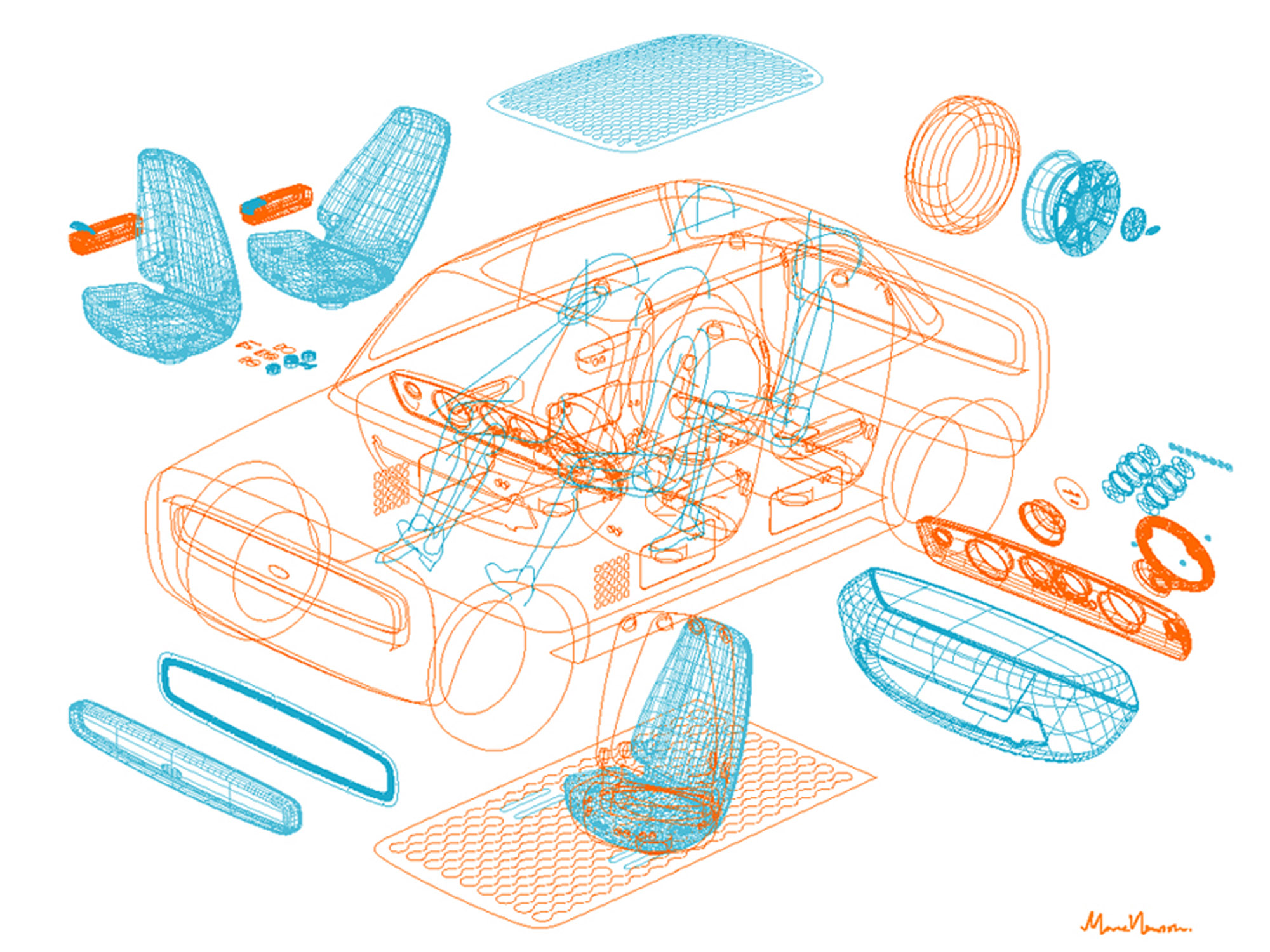
The 021C concept car for Ford, 1999

Newson’s weighty ‘Hourglass’, which comes in 10-minute and 60-minute versions, features stainless-steel balls plated in nickel, black nickel, copper or gold
Jonathan Bell has written for Wallpaper* magazine since 1999, covering everything from architecture and transport design to books, tech and graphic design. He is now the magazine’s Transport and Technology Editor. Jonathan has written and edited 15 books, including Concept Car Design, 21st Century House, and The New Modern House. He is also the host of Wallpaper’s first podcast.
-
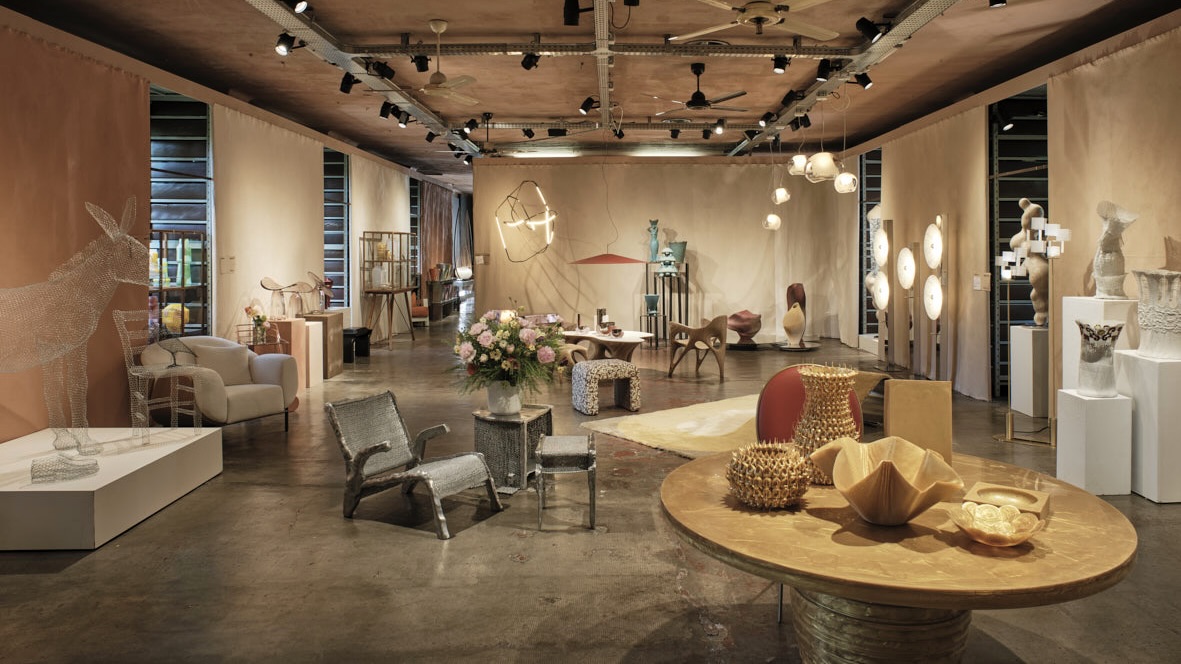 Eight designers to know from Rossana Orlandi Gallery’s Milan Design Week 2025 exhibition
Eight designers to know from Rossana Orlandi Gallery’s Milan Design Week 2025 exhibitionWallpaper’s highlights from the mega-exhibition at Rossana Orlandi Gallery include some of the most compelling names in design today
By Anna Solomon
-
 Nikos Koulis brings a cool wearability to high jewellery
Nikos Koulis brings a cool wearability to high jewelleryNikos Koulis experiments with unusual diamond cuts and modern materials in a new collection, ‘Wish’
By Hannah Silver
-
 A Xingfa cement factory’s reimagining breathes new life into an abandoned industrial site
A Xingfa cement factory’s reimagining breathes new life into an abandoned industrial siteWe tour the Xingfa cement factory in China, where a redesign by landscape specialist SWA Group completely transforms an old industrial site into a lush park
By Daven Wu
-
 Best Body Slammers: Japanese female wrestling meets design
Best Body Slammers: Japanese female wrestling meets designThe Sukeban female wrestling league made its Miami debut in December, with a championship belt by Marc Newson, hats by Stephen Jones, creative direction by Olympia Le Tan – and a win in the Wallpaper* Design Awards 2024
By Maria Sobrino
-
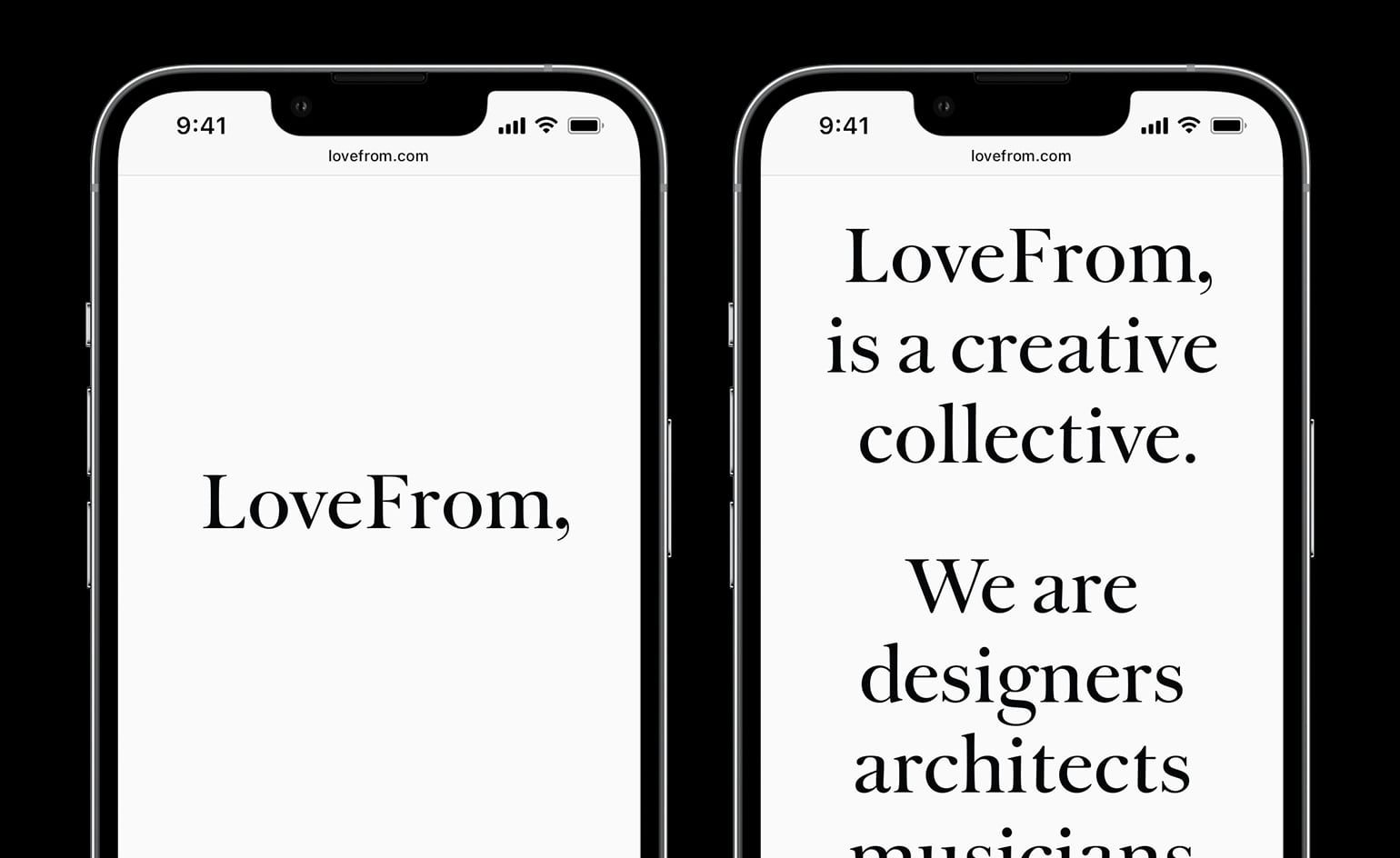 Jony Ive’s LoveFrom unveils official website
Jony Ive’s LoveFrom unveils official websiteLaunched today, 11 October 2021, LoveFrom.com reveals the creative collective’s visual identity, anchored in a Baskerville-inspired typeface called LoveFrom Serif, provides a statement of purpose, and pays gentle homage to Apple’s Steve Jobs
By Sarah Douglas
-
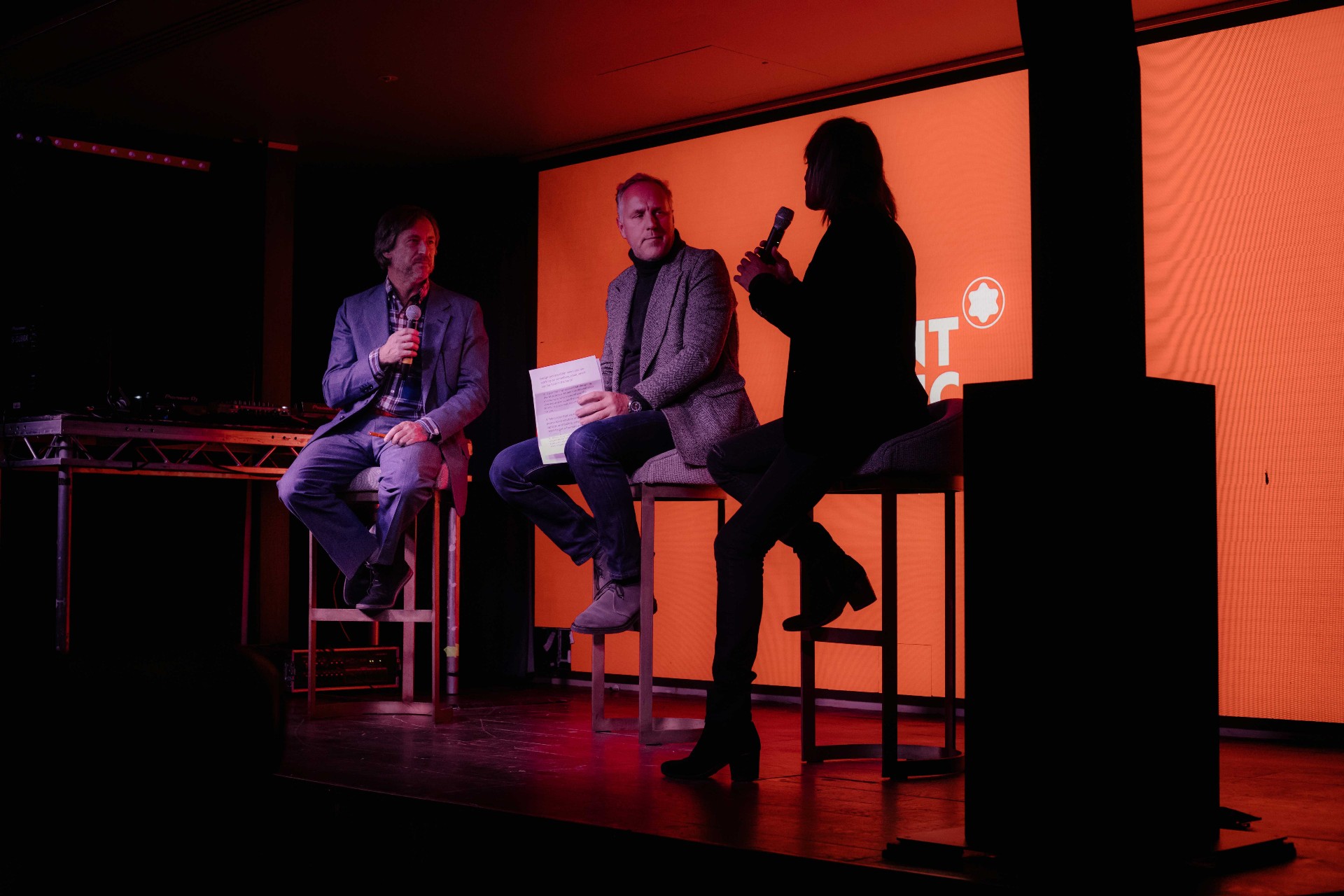 Simon Mills in conversation with designer Marc Newson and Montblanc creative director Zaim Kamal
Simon Mills in conversation with designer Marc Newson and Montblanc creative director Zaim KamalBy Simon Mills
-
 Rolling out: Marc Newson reinvents Louis Vuitton’s trunks for the 21st century
Rolling out: Marc Newson reinvents Louis Vuitton’s trunks for the 21st centuryBy Nick Vinson - Art Direction
-
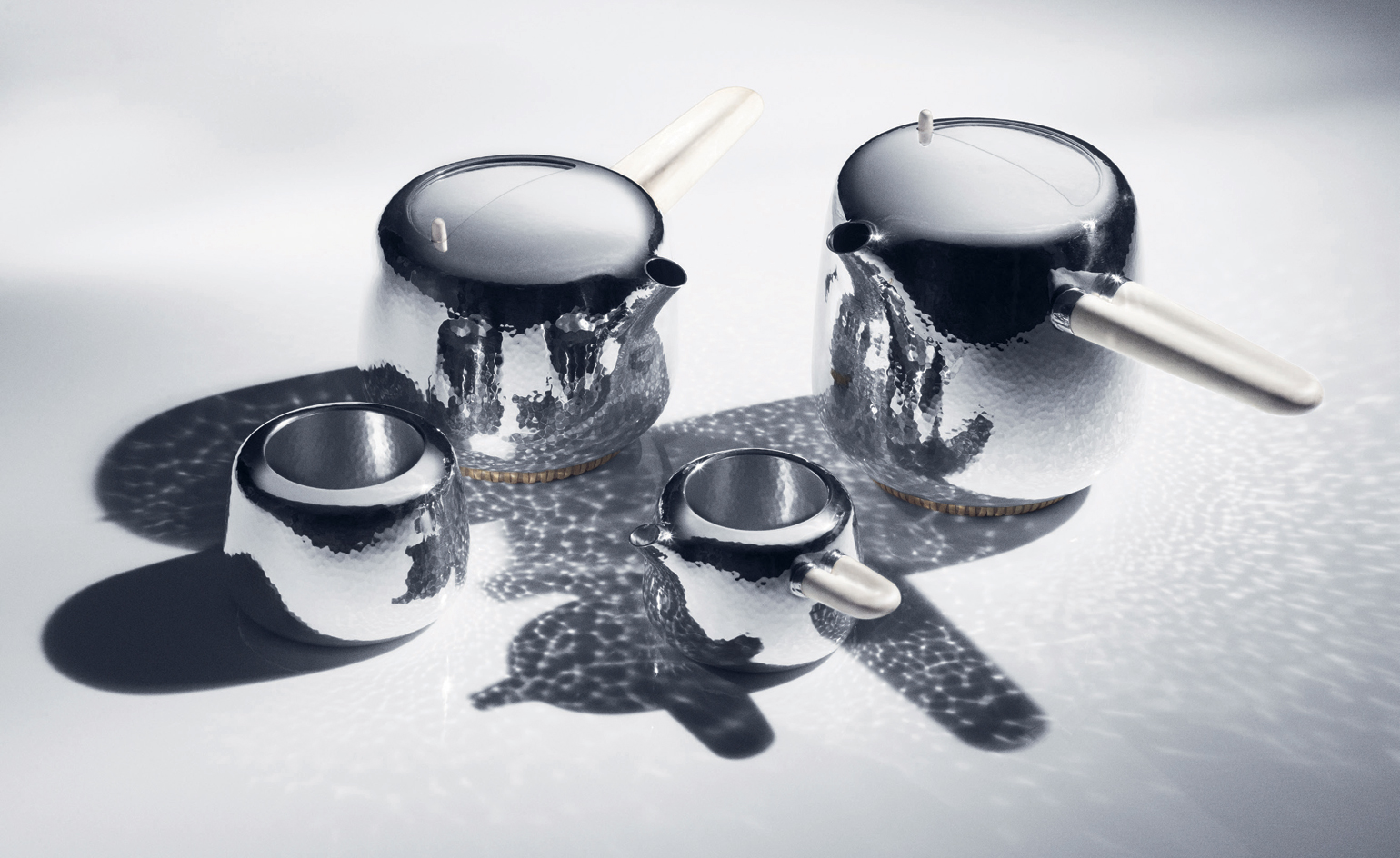 Hot metal: Georg Jensen moves into Beijing with an ambitious new store and Marc Newson-designed tea set
Hot metal: Georg Jensen moves into Beijing with an ambitious new store and Marc Newson-designed tea setBy Rosa Bertoli
-
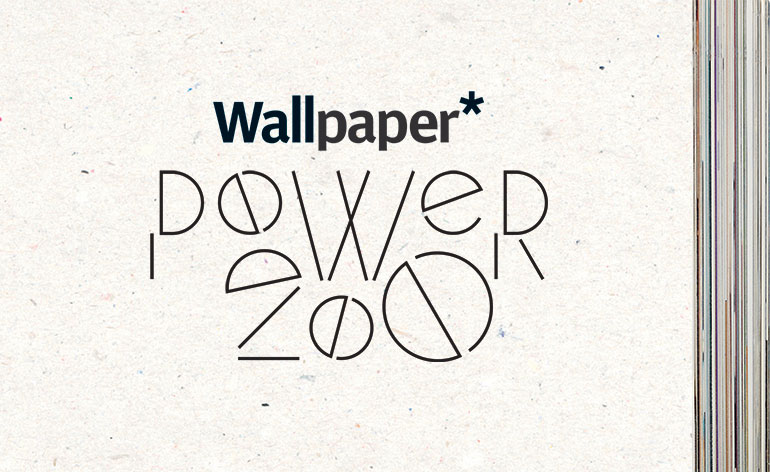 Wallpaper* Power 200: the world’s top design names and influencers
Wallpaper* Power 200: the world’s top design names and influencersIt’s back with a double helping of provocation and praise. We have plumped up this year’s Power List to a meaty two-ton’s worth of carefully measured rankings, an upscaled calibration of design achievement. As we strongly suspected, last year’s Power 100 caused a considerable stir and provoked strong words. And, as last month’s editor’s letter made clear, even alarming threats of revenge and recrimination. So this year, unchastened, we thought we would do it all again, but double the dose. To mark our 200th issue, the power 100 has become 200. Or rather 100+100 (normal disservice will be resumed next year). And, in a self-congratulatory nod to our keen eye for talent and perhaps the propulsive effect we have had on nascent design careers, we have trawled the Wallpaper* archives, retraced our expert truffling and recovered the debut appearances of future Power Listers. (Look out for long-lost hair, unlined faces and eyes undimmed).
By Rosa Bertoli
-
 Marc Newson targets sharpshooters with a shotgun for Beretta
Marc Newson targets sharpshooters with a shotgun for BerettaBy Rosa Bertoli
-
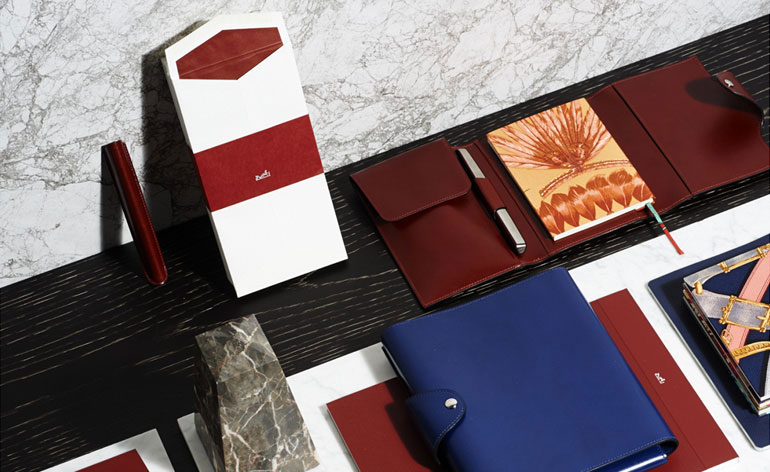 Marc Newson designs Hermès’ first ever pen
Marc Newson designs Hermès’ first ever penBy Amy Serafin